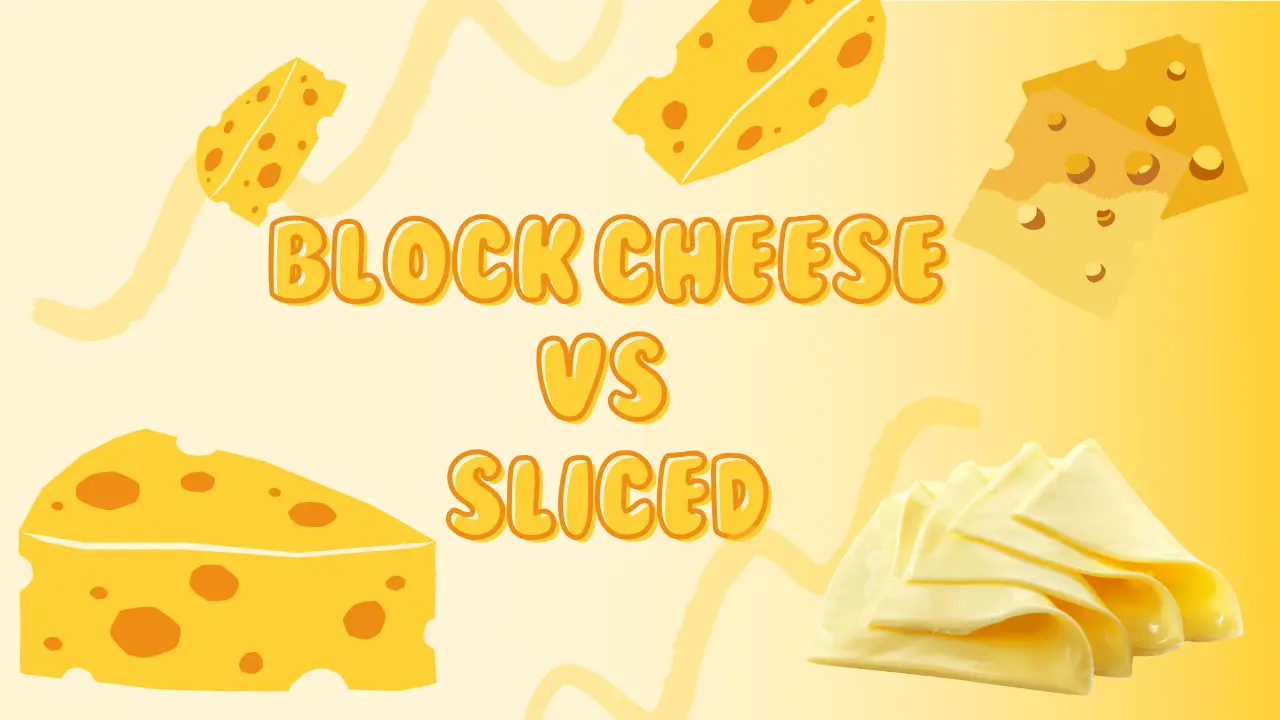When it comes to cheese, there’s no one-size-fits-all solution. Each form – cubed, sliced, and shredded – has unique benefits and applications in the kitchen. The main difference between cubed, sliced, and shredded cheese is their shapes and sizes, affecting their applications in cooking and snacking. Cubed cheese is cut into small cubes, ideal for snacking and party platters. Sliced cheese is thinly sliced, perfect for sandwiches and burgers. Shredded cheese is grated into fine strands, making it suitable for melting and blending with other ingredients in various recipes.
Choosing The Best Cheese Form: Cubed, Sliced, or Shredded?
Cubed Cheese: A Snack Lover’s Delight
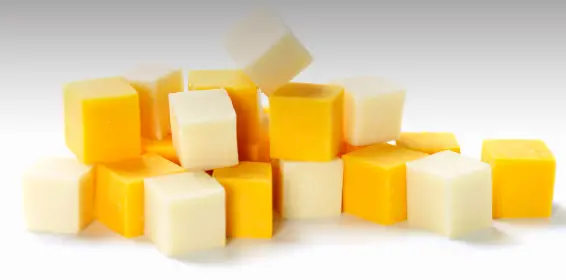
Advantages
- Perfect for snacking and party platters
- Pairs well with crackers, fruits, and meats
- Can be skewered for kabobs
- Maintains its shape and texture
- Cubed cheese works best with firm cheeses.
- Suitable for harder cheeses that tend to shatter.
Disadvantages
- Not ideal for melting
- It can be not easy to spread on sandwiches
Sliced Cheese: Sandwich Superstar – The Versatile Option For Smooth Cheeses
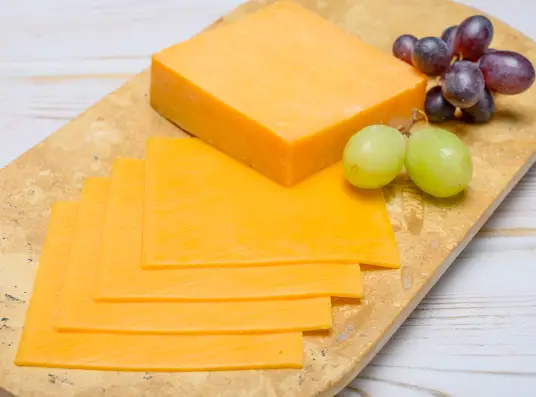
Advantages
- Ideal for sandwiches and burgers
- Melts evenly and consistently
- It comes in various thicknesses to suit your preferences
- Easy to store and portion
Disadvantages
- Not as versatile as shredded cheese
- It can become dry if not stored properly
Shredded Cheese: The Melting Champion

Advantages
- Melts quickly and evenly
- Ideal for recipes requiring melted cheese (e.g., pizza, casseroles)
- Mixes well with other ingredients
- Provides excellent coverage for dishes
Disadvantages
- They can clump together if not used immediately
- Shorter shelf life compared to cubed and sliced cheese
FAQs
Which type of cheese is best for melting?

Shredded cheese is the best choice for melting due to its smaller size and increased surface area, allowing it to melt quickly and evenly.
Can I substitute one type of cheese for another in a recipe?
Yes, but the results may vary. While it’s possible to substitute cubed or sliced cheese for shredded cheese, the melting and texture may differ. Always consider the intended purpose of the cheese in the recipe before substituting it.
How should I store different types of cheese?
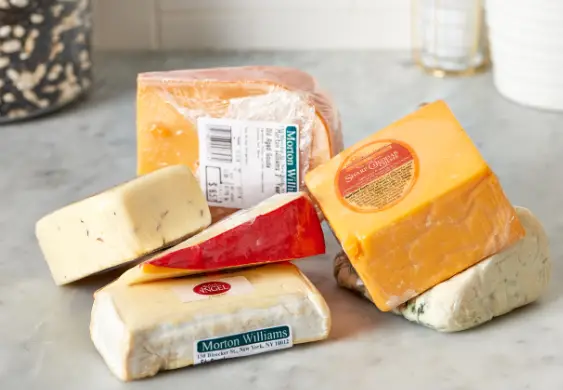
Cubed and sliced cheese should be stored in an airtight container or wrapped tightly in plastic wrap. Shredded cheese should be stored in a resealable plastic bag with as much air removed.
Are Cheese Cubes Healthy?
Cheese cubes can be a healthy snack option when consumed in moderation. Cheese is a good source of nutrients such as calcium, protein, phosphorus, and vitamins A and B12. However, it is important to note that cheese is also high in saturated fat and sodium, which can be detrimental to health when consumed in excess. Choosing low-fat or reduced-sodium varieties and controlling portion sizes can make cheese cubes healthier.
How Much Is A Cheese Cube?
A cheese cube typically refers to a small portion of cheese cut into a cube shape. The size and weight of a cheese cube can vary, but common portion size is about 1 inch (2.54 cm) on each side. This size of cheese cube usually weighs around 0.5 to 1 ounce (14 to 28 grams). Remember that nutritional values will differ based on the cheese type and the cube size.
Why Sliced Cheese Tastes Different Than It Used To?[/su_heading]
There could be several reasons why sliced cheese may taste different than it used to:
- Change in recipe or ingredients: Cheese manufacturers might have changed the recipe or ingredients used in their cheese production, which can affect the taste. This could include changes in the type of milk, adding new ingredients, or altering the processing method.
- Different brands or types of cheese: If you’ve switched to a different brand or type of cheese, there will likely be variations in taste due to differences in recipes, ingredients, and production methods.
- Storage conditions: The taste of cheese can be affected by storage conditions. Exposure to air, moisture, or temperature fluctuations can lead to flavor and texture changes. Sliced cheese, in particular, has a larger surface area exposed to air, which can cause it to dry out or absorb other flavors from the surrounding environment.
- Age of the cheese: The taste changes as it ages, with some cheeses becoming more flavorful and complex. If the sliced cheese you’re consuming is older or younger than what you’re used to, it may taste different.
- Personal taste preferences: Our preferences can evolve due to various factors such as age, dietary changes, or exposure to new foods. Your taste preferences may have changed, affecting your perception of the cheese’s flavor. To ensure the best taste and quality, always store sliced cheese properly, and pay attention to your cheese’s brand, type, and age.
Conclusion
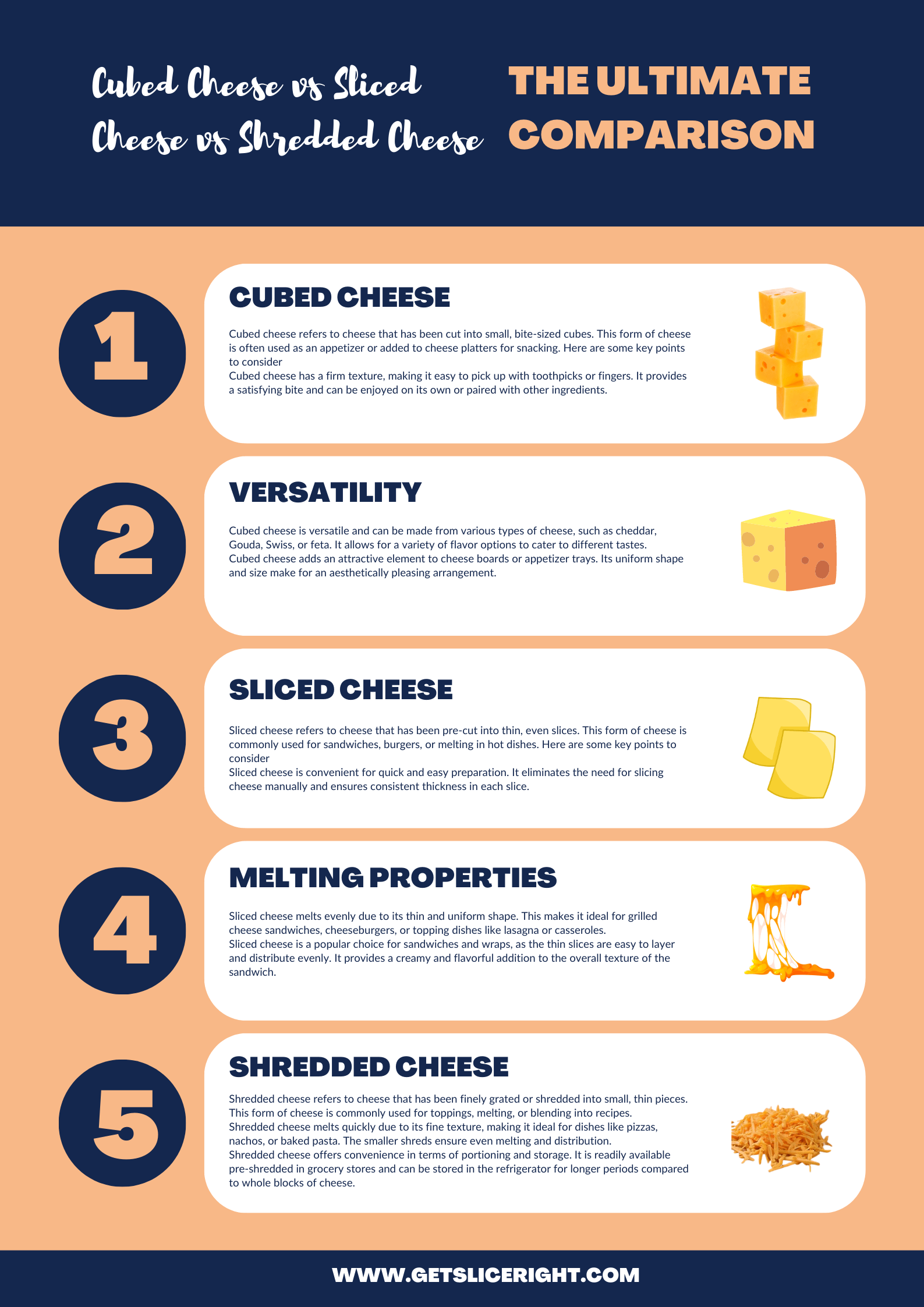
The choice of cubed, sliced, or shredded cheese depends on personal preference and intended use. For convenience and fast preparation times, pre-cut cubes or slices are ideal. For heightened flavor intensity, freshly grated shredded cheese is best. Ultimately, it all depends on what you like and the dish you plan to make. Experiment with different types of cheese to find the right one for your meal.

Mario Batali is a renowned author, food enthusiast, and passionate chef who has dedicated his life to exploring the world of culinary arts. With a love for sharing his knowledge and experiences, Mario has become a prominent figure in the food blogging community, inspiring countless readers with his creativity and expertise.
In addition to his culinary prowess, Mario Batali is also a talented writer with a flair for engaging storytelling. He launched his own food blog to share his recipes, cooking tips, and personal experiences in the kitchen. Over time, Mario’s blog gained a loyal following of food enthusiasts who appreciate his unique approach to cooking and his dedication to using only the finest ingredients.
Mario Batali’s passion for food and his commitment to sharing his knowledge with others have made him a true inspiration in the world of culinary arts. Through his blog, cookbooks, and public appearances, Mario continues to spread his love of food and the joy of cooking with his ever-growing fanbase.

